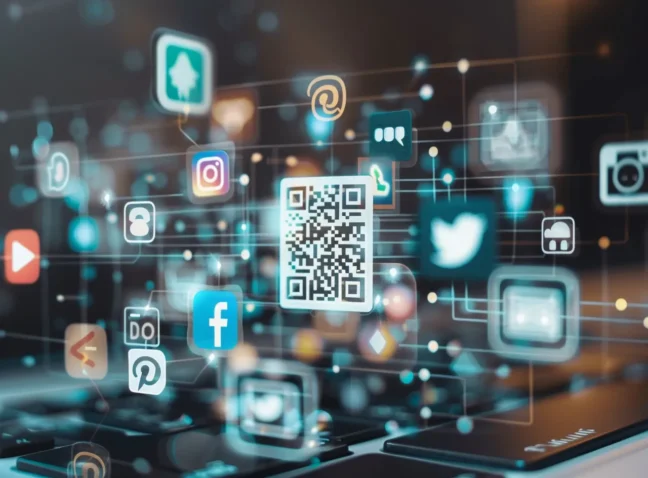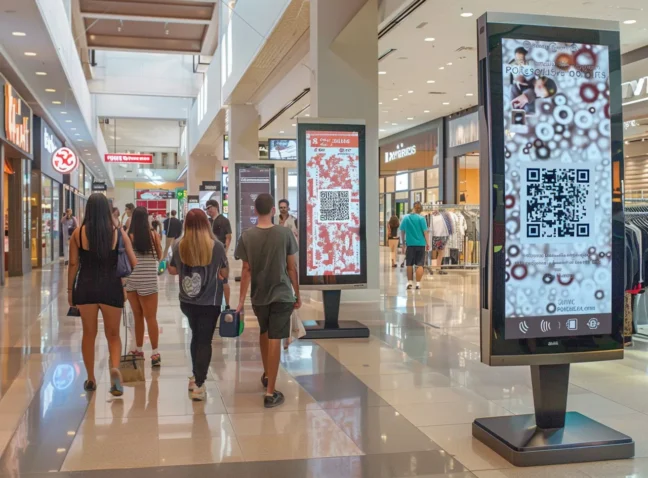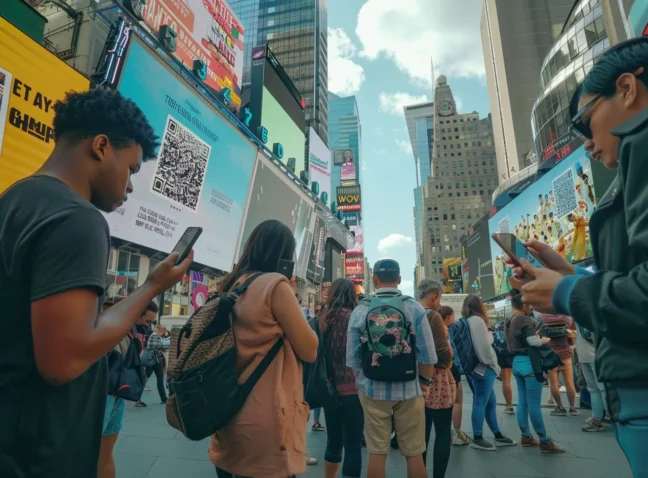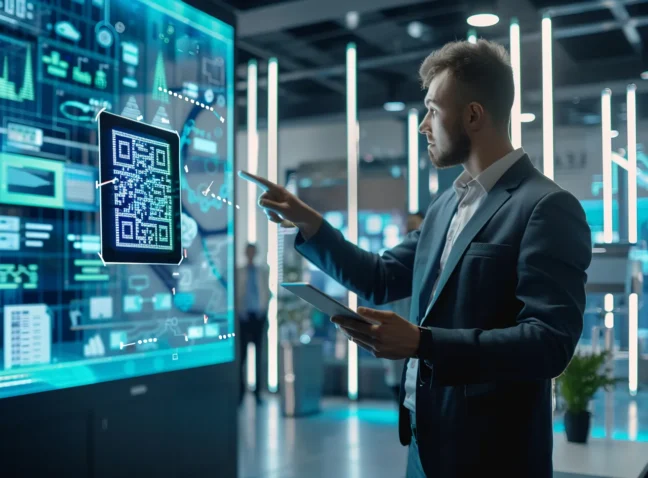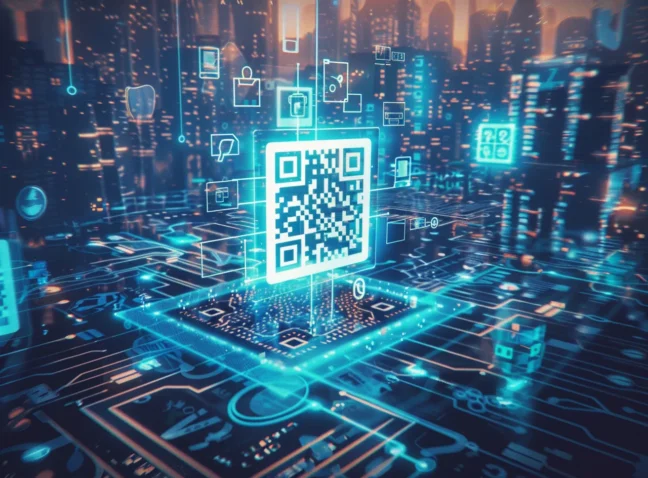In the digital age, the way we manage documents is undergoing a subtle yet impactful transformation, thanks to QR codes. These compact, universal and easy to use tools offer a solid path between physical paperwork and digital data, making document handling more accessible and secure. Whether it’s for personal use or reinforcing office workflows, integrating QR codes into document management can significantly reduce clutter and enhance accessibility. By embedding a wealth of information in a small square, they transform traditional documents into interactive gateways. Curious about how this simple change can make a big difference in your document management strategy? Read on to find out.
Why Choose QR Codes for Documents? Efficient and Secure Solutions
In today’s digital landscape, documents serve as vital components across diverse sectors such as education, real estate, retail, and hospitality. However, disseminating these documents efficiently poses a significant challenge. Conventional methods like emails or messaging platforms often prove cumbersome for widespread distribution, resulting in subpar engagement rates.
Enter QR Codes for documents – a game-changer in simplifying the sharing process. These codes offer a seamless solution by enabling instant access to documents via any mobile device, eliminating the constraints of specific communication channels. With tools like Beaconstac’s QR Code generator, creating QR Codes becomes a breeze, saving valuable time while enhancing user accessibility and experience.
QR Codes for Documents: A Modern Solution for Efficient Sharing
Creating a QR Code for a document is a simple and intuitive process. Platforms like Beaconstac provide an easy-to-use interface where users can generate a QR Code in just a few steps. By selecting the QR Code type, pasting the document link, and customizing the design to align with brand guidelines, we ensure a perfect experience for our customers. This customization not only enhances brand recognition but also fosters trust among users. The growing adoption of QR codes across various industries underscores their practicality and effectiveness. For instance, in real estate, QR code usage for document sharing has increased by 28%, while 67% of consumers find QR codes helpful for accessing product information in retail settings. Similarly, the healthcare sector has witnessed a 45% rise in QR code adoption for securely sharing patient documents. Additionally, QR code usage for event ticketing has surged by 72%, highlighting its significance in facilitating document access. Furthermore, hospitality businesses have reported a 35% increase in guest satisfaction after implementing QR codes for accessing digital menus and room information. These statistics affirm the value and versatility of QR codes in document management.
Pros of QR Codes for Document Management: Simplify Your Workflow
In the fast-paced digital world, the adoption of QR codes for document management has become an integral part of modern business practices, especially in fields like real estate. This method of document sharing not only ensures a higher level of security but also caters to the growing demand for quick and easy access to information. By incorporating QR codes, companies are able to streamline their operations and provide a more engaging experience for their clients and partners. This innovative approach reflects a commitment to leveraging technology to stay ahead in today’s competitive landscape:
- Real Estate: Witnessing a significant 28% increase, QR codes have become a pivotal tool in the real estate industry, facilitating smoother transactions and document exchanges, enhancing client engagement, and streamlining property showings and information dissemination.
- Retail: With 67% of consumers appreciating the ease of accessing product information through QR codes, the retail sector has seen a substantial uplift in customer experience, leading to better informed purchasing decisions and increased consumer satisfaction.
- Healthcare: The healthcare sector has embraced a 45% rise in the adoption of QR codes, primarily for the secure sharing of patient documents. This move has contributed to improved patient care, data security, and operational efficiency within medical institutions.
- Event Management: A remarkable 72% surge in the use of QR codes for event ticketing has revolutionized the way attendees access and manage their event participation, offering a seamless entry process and reducing the environmental impact of traditional ticketing methods.
- Hospitality: Implementing QR codes has led to a 35% increase in guest satisfaction within the hospitality industry. Digital menus and room information accessible via QR codes have enhanced the guest experience by providing instant access to services and amenities, thus redefining convenience and personalization in hospitality services.
The Downsides of QR Codes for Documents: Security Risks & Privacy Concerns
However, drawbacks accompany the utilization of QR Codes for document access. The effectiveness of QR Codes can be limited by the user’s familiarity and comfort with the technology. Some individuals may find scanning QR Codes less intuitive, potentially impeding widespread adoption. Moreover, reliance on QR Codes necessitates users to possess a smartphone and a suitable scanning app, which might not always be feasible, particularly in less technologically advanced regions. These challenges underscore the importance of considering alternative methods or supplementary strategies to ensure seamless access to information. We recognize the need for a balanced approach that takes into account varying levels of technological proficiency and accessibility, ensuring inclusivity and effectiveness in document management solutions.
Limitations of QR Codes for Paperwork Accessibility
Despite the convenience QR codes offer in document access, facilitating quick and easy retrieval of information with just a scan, they are not without their challenges. The very nature of QR codes, which bridges the digital and physical worlds, opens up a myriad of security concerns. Many users and businesses alike are wary of the potential risks involved in their use, particularly when sensitive and personal information is at stake. These apprehensions are not unfounded, as evidenced by recent statistics:
- A significant portion of consumers, exceeding 60%, have voiced their apprehensions regarding the safety of their personal data when engaging with QR codes for accessing documents. This statistic underscores a widespread concern that, despite the convenience offered by QR codes, the potential for unauthorized access to personal information remains a critical barrier to their universal acceptance.
- In the business realm, nearly half of all companies have encountered security incidents directly linked to QR code usage. These incidents range from data breaches, where sensitive information is unlawly accessed, to malware attacks that compromise the integrity of business systems. Such vulnerabilities highlight the need for enhanced security measures and best practices in the deployment of QR codes within professional settings.
- The misuse of QR codes has seen a staggering increase, surging by 300% in the past year alone. Malicious actors exploit QR codes to redirect unsuspecting users to phishing websites or to disseminate malware, significantly undermining the trust in this technology. This alarming trend emphasizes the urgency for more robust safeguards and public awareness to mitigate such risks.
- Privacy concerns are particularly pronounced among users, with a vast majority, 78%, expressing worry that scanning QR codes could compromise their privacy. This is especially pertinent in sectors dealing with highly sensitive information, such as healthcare and finance, where the ramifications of a breach are far-reaching.
- The financial implications of QR code fraud are monumental, with businesses worldwide incurring losses estimated at $2.3 billion. This figure highlights the economic impact of QR code misuse, stressing the importance of adopting stringent security protocols to protect against fraudulent activities.
Discover Top Brands Using QR Codes for Documents
In today’s digital landscape, QR Codes are redefining the way brands across various industries engage with their audience and streamline their operations. From educational content to real estate listings, and from retail promotions to hospitality services, these square-shaped gateways offer a direct link between physical and digital realms. Brands adopting this approach are not just staying ahead of the curve; they’re also crafting more interactive and engaging experiences for their customers. By embedding QR Codes into their communication and marketing strategies, they’re tapping into a seamless blend of convenience and innovation, making information access as simple as a camera scan.
This tech-savvy trend is not just about adopting new technology; it’s about reshaping the interaction landscape to make it more accessible, efficient, and engaging for everyone involved:
- The adoption of QR Codes by more than 70% of Fortune 500 companies is a testament to their effectiveness in document management. Industry giants like Google and Microsoft are leading the charge, integrating QR technology to ensure that crucial documents are just a scan away, thereby enhancing operational efficiency and data accessibility.
- Retail giants Walmart and Target are revolutionizing the shopping experience by integrating QR Codes, resulting in a 30% boost in customer engagement. These codes link customers directly to product information, offers, and reviews, enriching their shopping journey and empowering them with information at their fingertips.
- In the financial sector, institutions like Chase and Wells Fargo are leveraging QR Codes to streamline document retrieval processes, witnessing a remarkable 25% increase in efficiency. This innovation allows customers to access their documents securely and swiftly, enhancing customer satisfaction and operational productivity.
- Healthcare organizations, including the renowned Mayo Clinic and Cleveland Clinic, have implemented QR Codes to reduce paperwork errors by 40%. This move not only improves patient care but also optimizes record-keeping and administrative tasks, making healthcare services more reliable and efficient.
- Educational powerhouses such as Harvard University and Stanford University are embracing QR Codes to revolutionize document sharing and administrative processes, achieving a 50% improvement in efficiency. This approach simplifies access to educational materials and administrative documents, enhancing the learning experience and operational workflows.
QR code generator for Doc
Want to share your documents without the hassle? Let’s get into QR codes and make it super simple. This is all about making your info easy to pass along and fun to access. Ready to shake up the way you share? Let’s kick things off and see how smooth sharing can really be!
